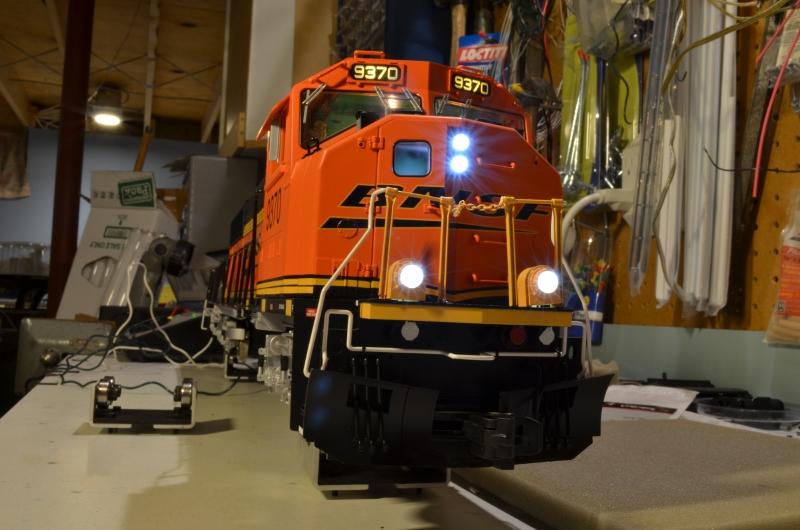I played with several LEDs in my G scale upgrades before I got it perfect for me. I used super bright warm white bulbs with the smallest resistor I dared (180? I think). When the trains are outside at night, they actually look real (scale sized of course). They are tough to look straight into because they're so bright.
I think they are not really focused and won't look quite like real, but they are darned close now. I didn't like the stock bluish ones that came with the engines (lower photo).

 The nice thing about using LEDs is you can add extras. I put ground lights on the PS2 interior light circuit that look cool to me. I had hoped that the new PS3 MTH G scale releases would start coming with more lighting effects. The MTH O scale Dreyfus I got has some cool lighting.
The nice thing about using LEDs is you can add extras. I put ground lights on the PS2 interior light circuit that look cool to me. I had hoped that the new PS3 MTH G scale releases would start coming with more lighting effects. The MTH O scale Dreyfus I got has some cool lighting.






